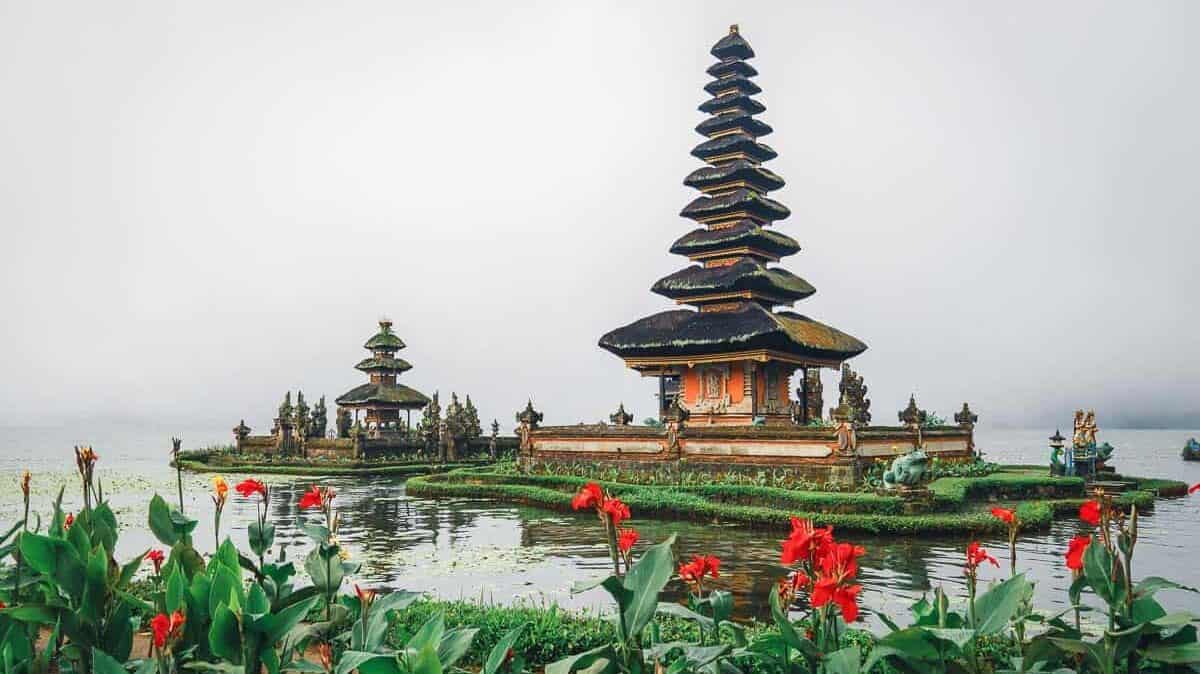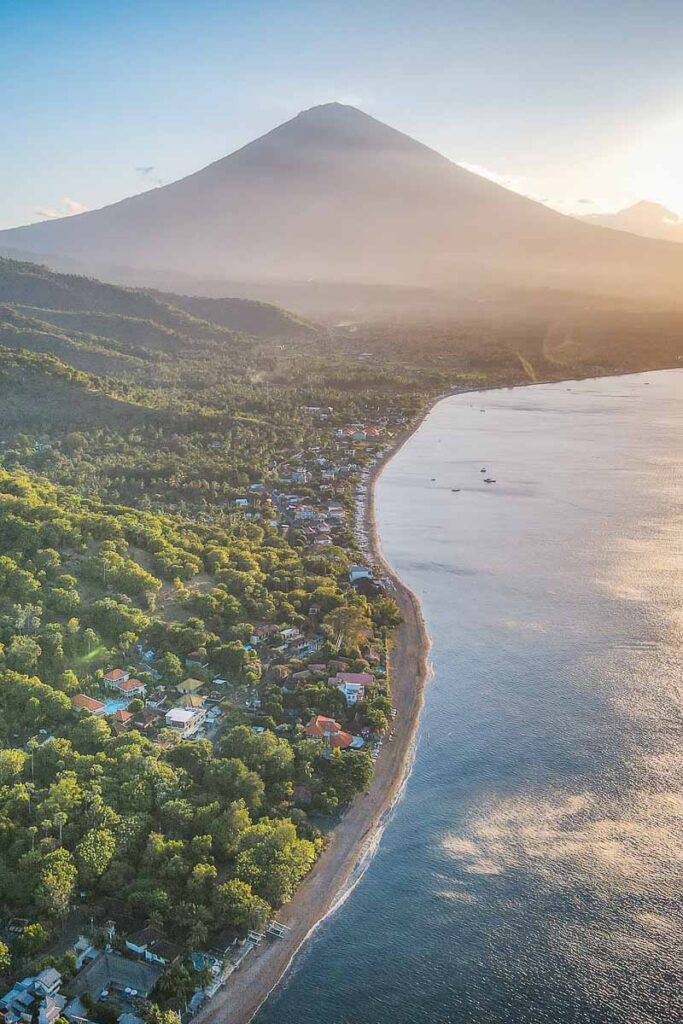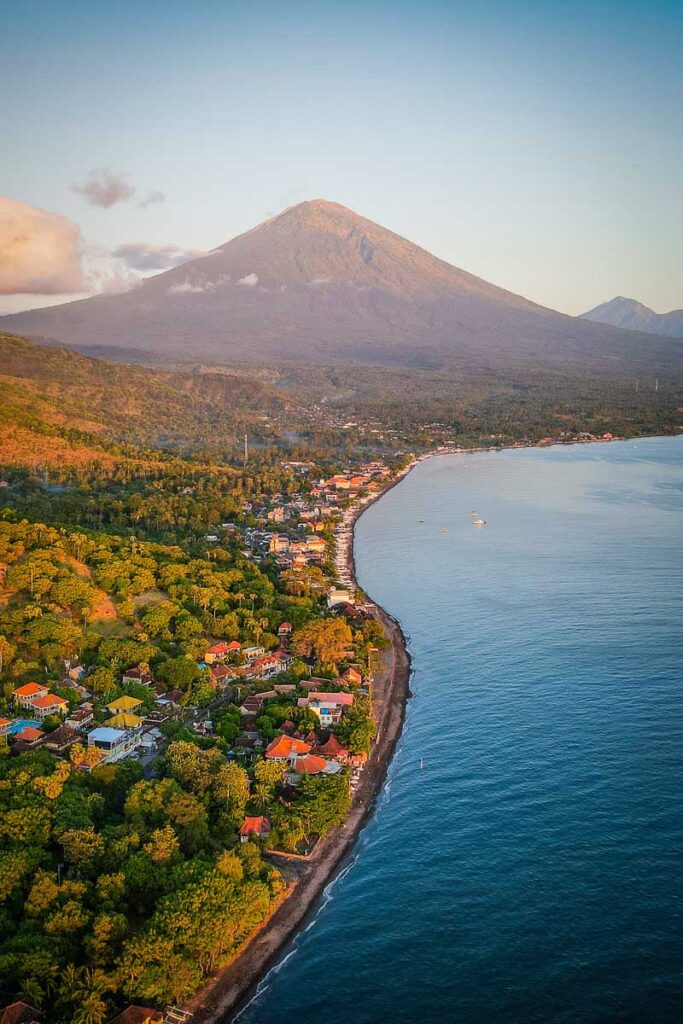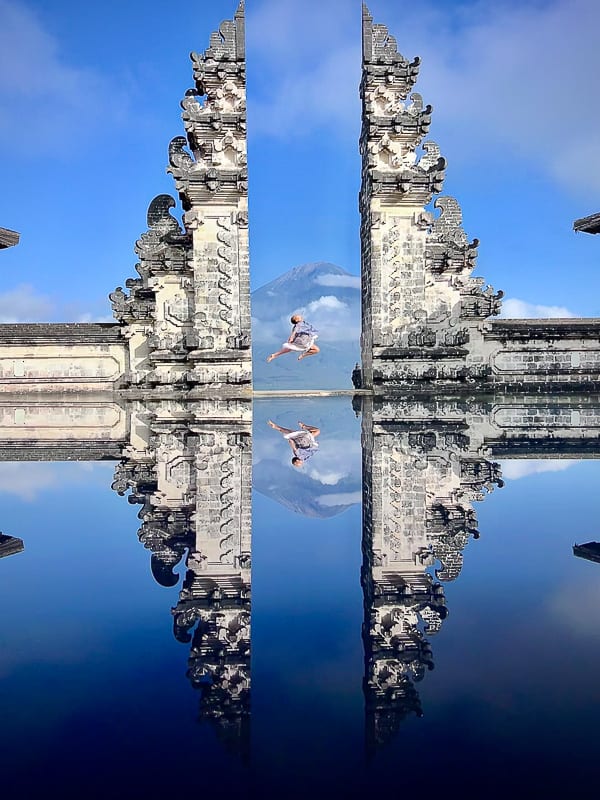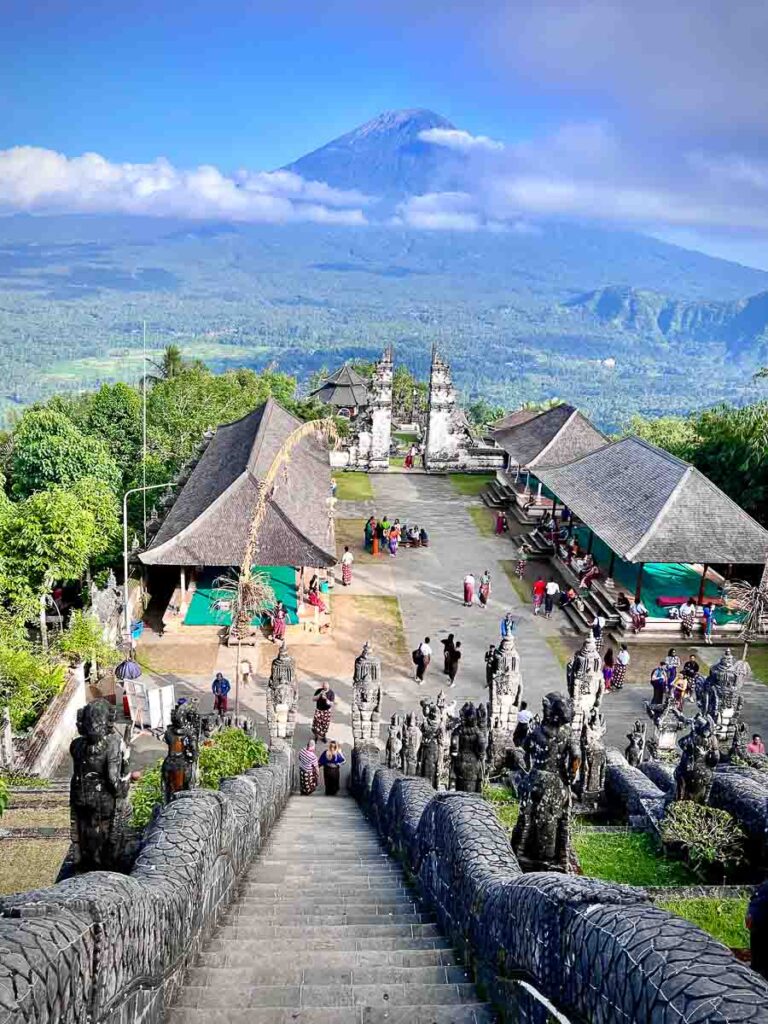27 Gorgeous Indonesian Landmarks That Will Make You Want to Pack Your Bags Immediately
Did you know that Indonesia comprises around 17,500 islands, making it the largest archipelago in the world? Even after spending more than three months in the country, there are so many amazing places to see that it’s hard to know where to start.
This post will introduce you to 27 of the most famous landmarks in Indonesia to add to your bucket list. Hike soaring volcanos and relax on beautiful beaches; visit ancient temples, and learn from Indonesia’s 600+ ethnic groups. While there is so much to see and do in Indonesia, be sure to put these breathtaking popular destinations on your bucket list!
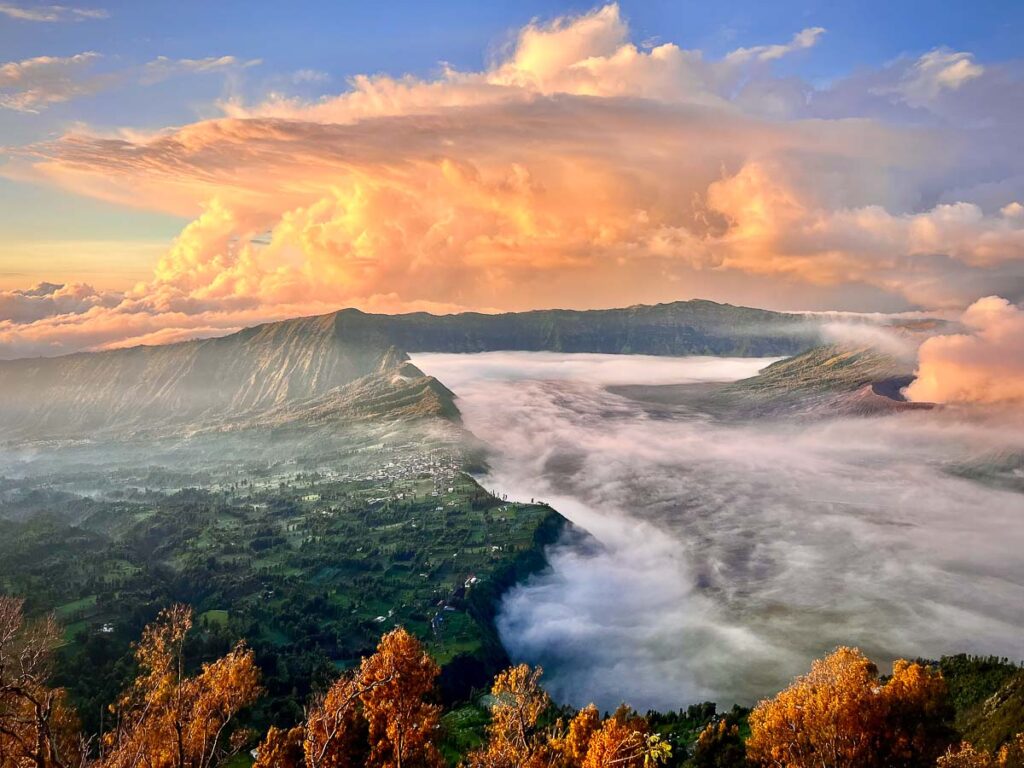
Overview of Landmarks in Indonesia
I will divide this blog post into natural and cultural landmarks in Indonesia. Within the natural landmarks, there will be a further breakdown of volcanoes as there are many iconic ones. For a similar reason, I will separate religious sites from the cultural landmark category.
Natural Landmarks of Indonesia: Komodo National Park, Kelingking Beach, Broken Beach, Gili Islands, Tegallalang Rice Terraces, Tumpak Sewu Waterfall, Raja Ampat
Volcanic Landmarks of Indonesia: Mount Bromo, Kawah Ijen, Kawah Putih, Mount Merapi, Mount Batur, Mount Agung, Mount Rinjani, Kelimutu Volcano, Lake Toba
Cultural Landmarks of Indonesia: Monas Monument, Kota Kua, Wae Rebo Traditional Village
Religious Landmarks of Indonesia: Borobudur Temple, Prambanan Temple, Istiqlal Mosque, Uluwatu Temple, Tanah Lot Temple, Besakih Great Temple, Lempuyang, Ulun Danu Beratan
Famous Landmarks in Indonesia Sorted by Island Province
To make it easier for those who are planning an Indonesian itinerary, here is the same list categorized by island provinces.
Sumatra: Lake Toba
Bali: Kelingking Beach, Broken Beach, Tegallalang Rice Terraces, Mount Batur, Mount Agung, Uluwatu Temple, Tanah Lot, Besakih Great Temple, Lempuyang Temple, Ulun Danu Beratan
Java: Mount Bromo, Kawah Ijen, Kawah Putih, Mount Merapi, Tumpak Seru, Kota Kua, Monas Monument, Borobudur, Prambanan Temple, Istiqal Mosque
East Nusa Tenggara: Komodo National Park, Kelimutu Volcano, Wae Rebo Traditional Village
Lombok: Gili Islands, Mount Rinjani
West Papa: Raja Ampat
Natural Landmarks in Indonesia
1. Komodo National Park, Lesser Sunda Islands
More east than most tourists go, Komodo National Park (a UNESCO World Heritage Site) has been proclaimed one of the New 7 Wonders of the World of Nature. As the only natural habitat of Komodo dragons, the largest living lizard in the world, this park includes three larger islands (Padar, Rinca, and Komodo Island) and numerous smaller ones.
The easiest way to explore Komodo National Park is by boat tour – like this one day action-packed one – , with departures leaving from the shores of Lombok and Labuan Bajo, Flores. Most operators follow similar itineraries.
🐉 EDITOR’S PICK: Best Komodo National Park Tours
▶︎ Discover Komodo National Park in One Day (⭐5/5)
▶︎ Private 4D/3N Komodo National Park Exploration (⭐4.5/5)
Expect to find huge, uncommon creatures in the sea, land, and air. Trek to the iconic viewpoint of Padar, play on the pink beaches, and snorkel in blue waters, teeming with colorful fish and turtles.
Important Note: The government has postponed the planned increase in entrance fees from August 1, 2022. The cost of a day pass is currently 275k IDR (18.50 USD)/350k IDR weekends (23.50 USD). The price will increase to 3.75million IDR (250 USD) in January 2023. It is now safe for tourists to Labuan Bajo’s town after the protests have died down.
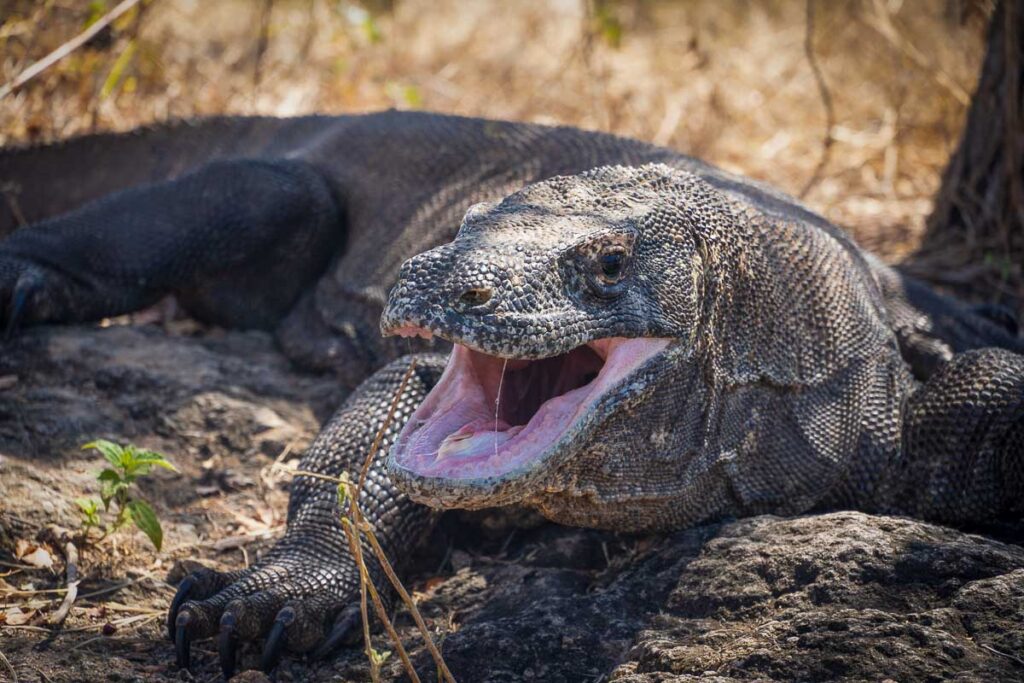
2. Kelingking Beach, Nusa Penida
You may have seen the dramatic cliffside of Kelingking Beach scrolling through your social media feed. Its sensational landscape includes a white sand beach, turquoise waters, and limestone cliffs that jut out into the sea, shaped like a T-Rex.
👉 Psssst…sign up for this Instagram tour to hit all the best places in Nusa Penida. And boy, trust me, there are lots to post.
Although crowded at the top, many visitors don’t make the short but harrowingly steep 30 minute descent down to the fantastic beach below. I’m not exaggerating; Halfway down, the path becomes more of a rock climb than a hike.
Not technically on mainland Bali, you will need to take a ferry from Padang Pai, Kusamba, or Sanur to get to neighboring islands like Nusa Lembongan and Nusa Penida to visit Kelingking Beach.

3. Broken Beach, Nusa Penida
Broken Beach is another stunning cliffside beach on the small island of Nusa Penida. It gets its name from the large archway formed by years of erosion, separating itself into the appearance of a beautiful sinkhole.
Right around the corner from Broken Beach is another Nusa Penida highlight, Angel’s Billabong.
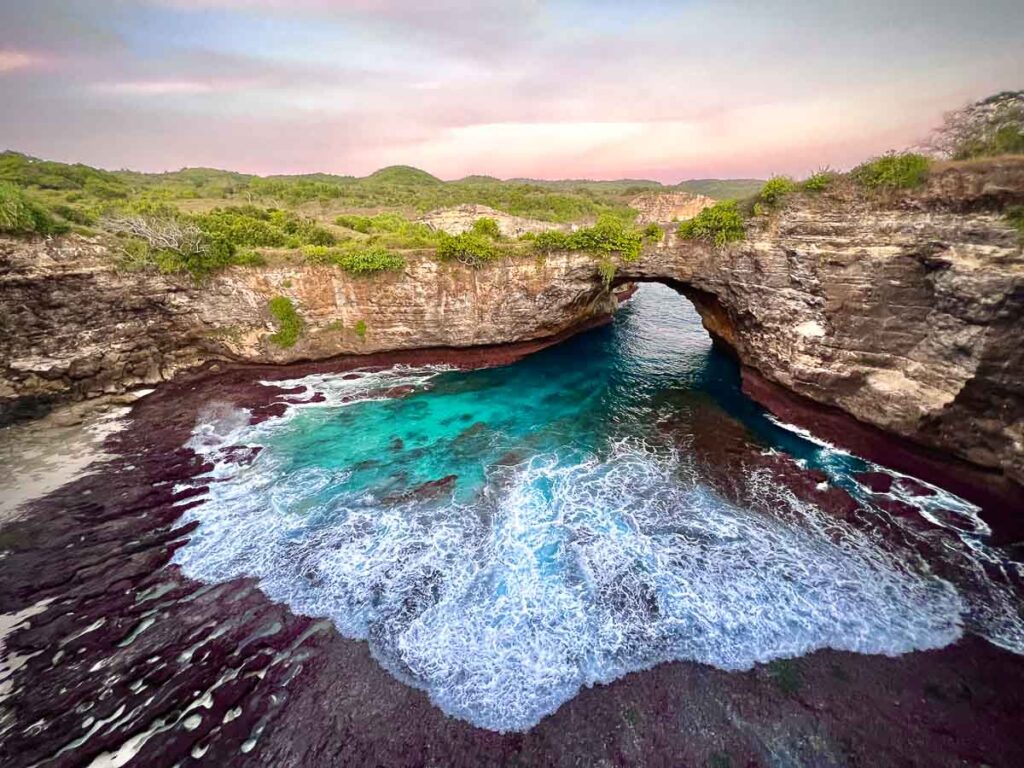
4. Gili Islands, Lombok
The Gili Islands are a group of three small islands off the coast of Lombok. They are known for their white sand beaches, clear waters, laid-back vibe, and lots and lots of turtle sightings.
Visitors can go snorkeling or diving, relax at their beachfront resort, surf, explore the island by bicycle, and party. No cars or motorcycles are allowed on these islands, so it is a peaceful reprieve from the rest of Indonesia.
Gili Trawangan (Gili-T for short) is the most touristy of the three island chain, best known for its epic partying and shroom shakes. Gili Air is a second choice for those looking for the relaxed atmosphere of Gili-T without the beer pong and drunk tourist shenanigans. Finally, Gili Meno is known as the honeymoon island and the smallest of the three.
👉 There are really only a few daytime things to do: snorkel and surf.
▶︎Book a surf class here
▶︎ Snorkel on all three islands here
Most people visit the Gilis with a fast ferry from Bali. Public ferries depart from Bangsal, Lombok, taking 20 minutes and costs a nominal fee.
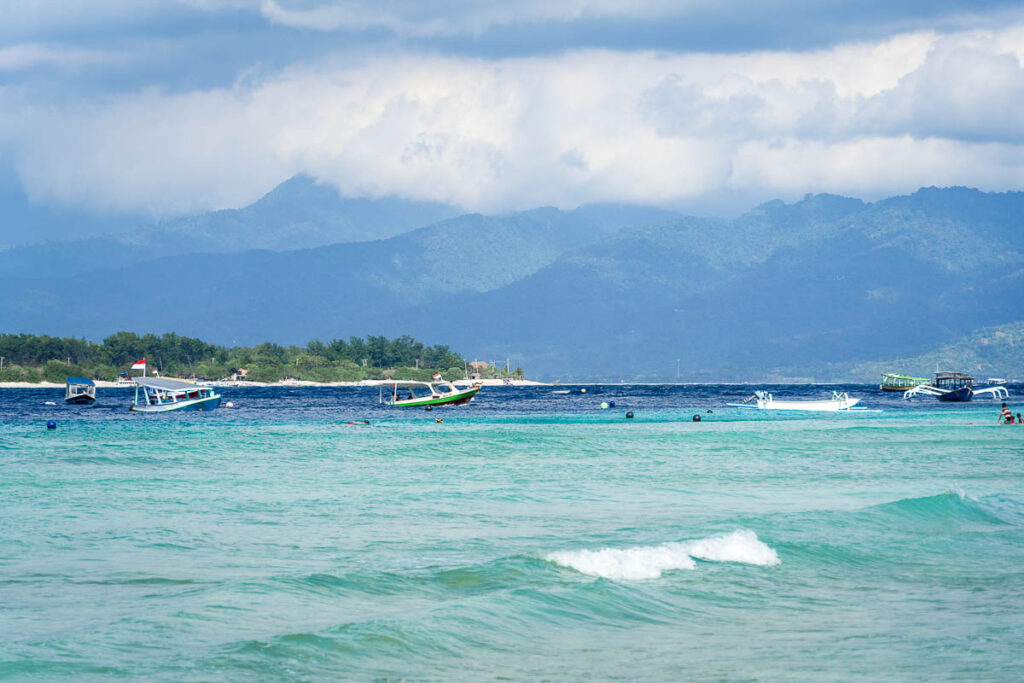
5. Tegallalang Rice Terraces, Bali
Fantastic rice terraces are sprawled all over Indonesia, most without a well-known name attached to them. Tegallalang Rice Terraces is a Bali bucket list thing to do on the island’s highlands, built using traditional methods.
I personally thought the Tegallalang Rice Terraces were overdeveloped and would recommend Jatuwilah Rice Terraces (a UNESCO Site) instead.
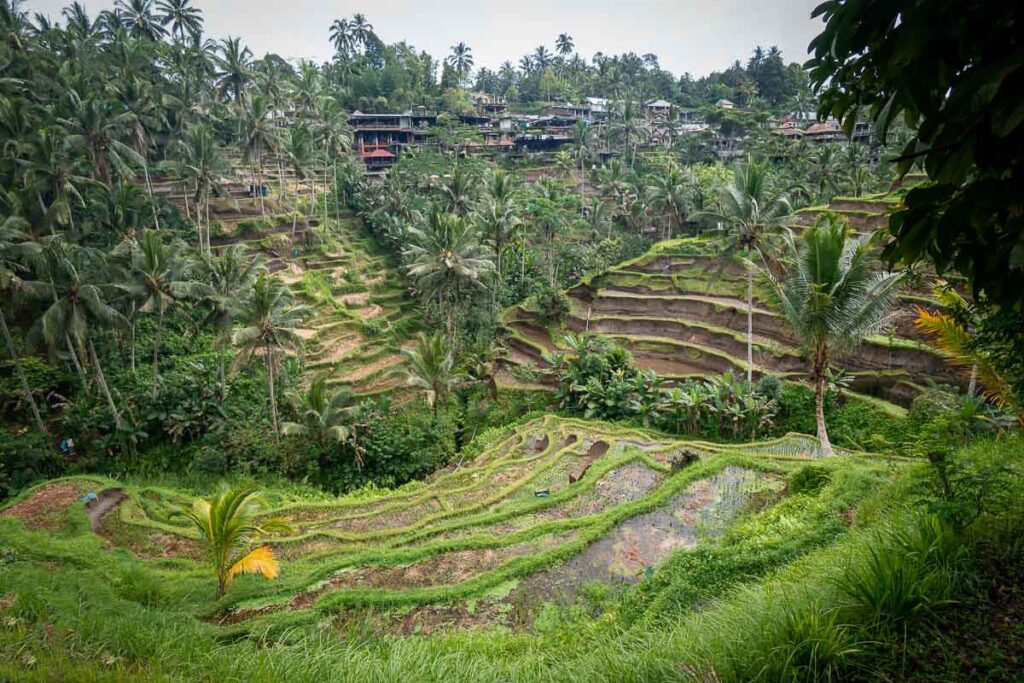
6. Tumpak Sewu Waterfall, Java
Tumpak Sewu is arguably one of the best waterfalls in Indonesia. It is located in East Java and has a height of over 120 meters. With so many water streams running down its circular-shaped plateau, the name Tumpak Sewu loosely translates to “a thousand waterfalls.”
Begin your waterfall tour at the viewing platform for a splendid sight of this beautiful Indonesian landmark with Mount Semeru in the background on a clear day. You can also trek the steep climb down through waterways to swim in the pool at the waterfall’s base.
7. Raja Ampat, West Papua
Raja Ampat is an archipelago located off the coast of West Papua. It is known for its clear waters, colorful reefs, and diverse marine life. Take a boat tour to snorkel or dive to see the reef and explore the many island chains.
Raja Ampat is a famous mecca for divers. As an area with 75% of the world’s coral diversity, expect endless dive sites to see some of the world’s most enormous sea creatures and 360 degree schools of fish surrounding you. Joining a liveaboard is a popular activity at Raja Ampat.
Volcanic Landmarks in Indonesia
8. Mount Bromo, Java
Mount Bromo is an active volcano in East Java that last erupted in 2016. It is one of Indonesia’s most popular tourist destinations and is known for its stunning sunrise views (when it’s not too cloudy).
Visitors can stay in the nearby town of Cemoro Lawang and wake up early to hike up to Mt. Pananjakan for the best sunrise views or take a jeep tour up to Mt. Bromo itself.
Jeep tours like this one will typically take tourists up to a sunrise viewpoint in the wee hours of the morning, then drive down to the base of Mount Bromo for a short hike to see the crater.
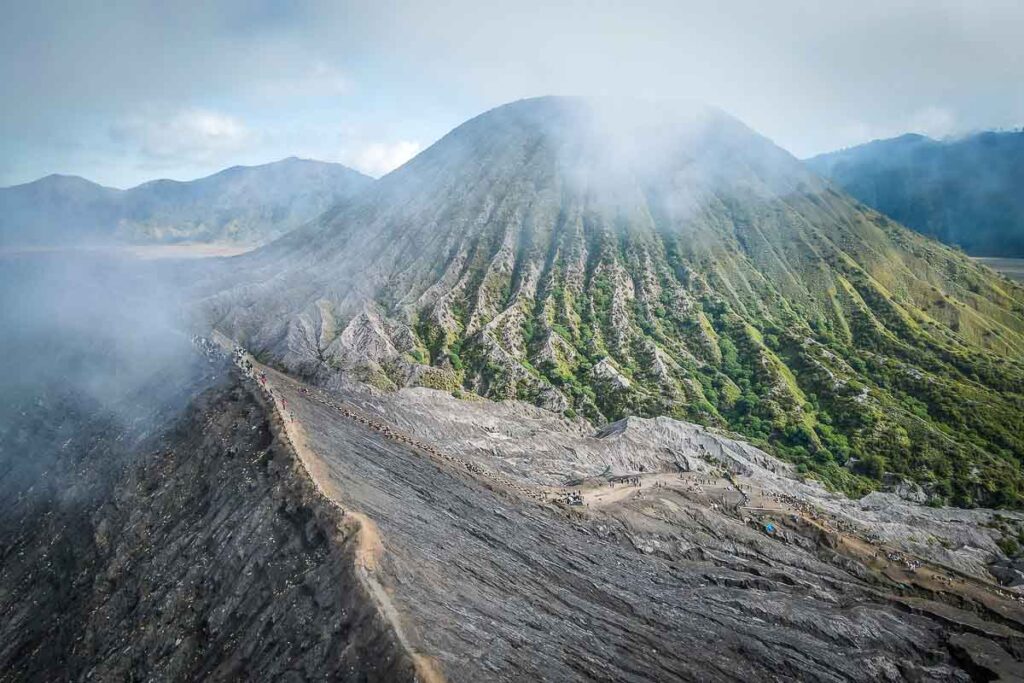
9. Kawah Ijen Crater, Java
The Ijen Crater is another unique volcanic crater located in East Java, commonly paired with a trip to Mount Bromo. It is known for its turquoise-colored acidic crater lake (the most acidic in the world, in fact) and the blue flames that can only be seen at night.
Hike a well-worn but steep path for an hour and a half to the crater’s edge. Continue down a not-as-good 1km trek into the volcano to see the acidic lake and watch the blue flames, which are sulphuric gas igniting when it comes into contact with oxygen. The best time to see the blue flames is at night, so be prepared to start your hike at 2am.
👉 Kawah Ijen may be one of the most unique things to do in Indonesia. Book a tour to see this insane acidic lake view and blue fire.
Kawah Ijen is still an active sulfur mine, and learning about the laborious lives of the sulfur miners made this volcano leave so much more of an impact. Miners carry 60-90 kg (132-200 lbs) of sulfur at a time on their back, 3 times a day, for 1000IDR (0.06 USD) per kilo.
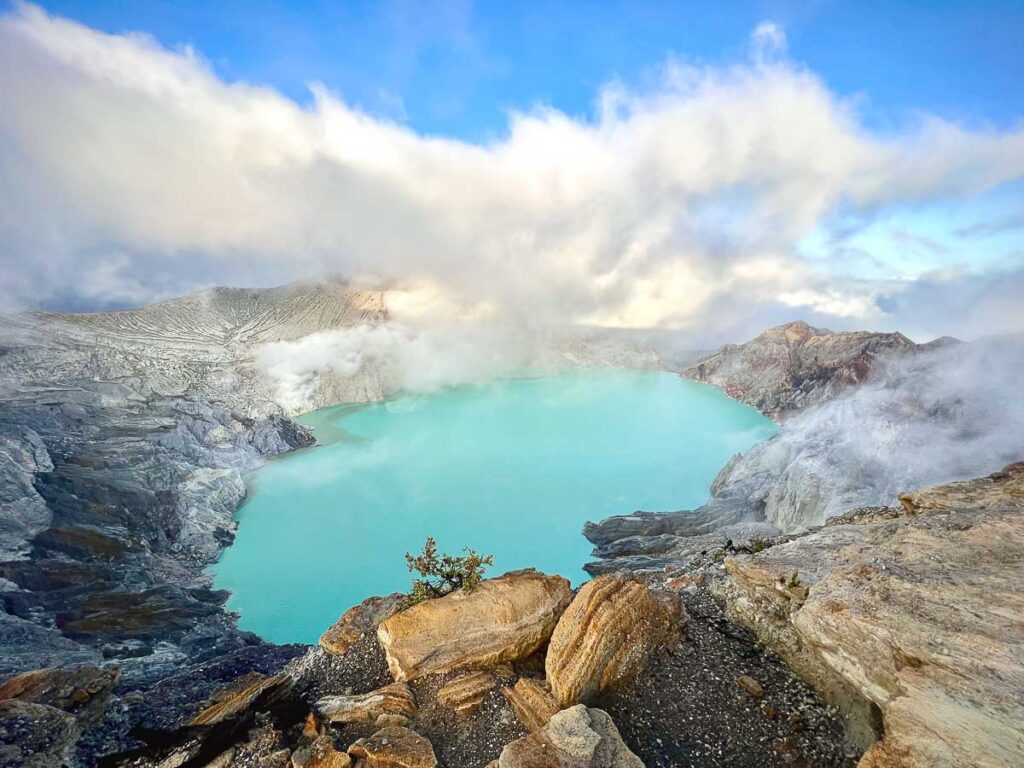
10. Kawah Putih, Java
Kawah Putih is a crater lake located in South Bandung, West Java. It gets its name and eerie white color from the high levels of sulfur in the water.
Take a 20 minute hike up a nearby hill for views of Kawah Putih below. The best time to visit is early morning when the air is still cool, and there are fewer crowds (it gets hectic later in the day).
From the Kawah Putih parking lot, visitors will be required to pay for a shuttle as well as an entrance fee to arrive at the main attraction – or book an all-inclusive one day tour including transport.
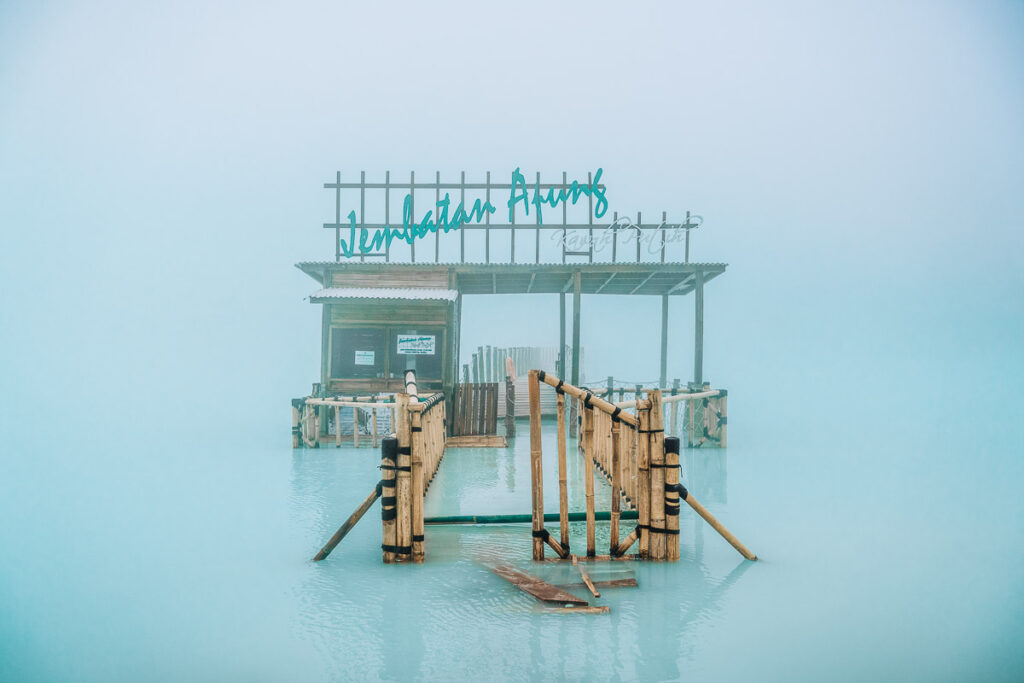
11. Mount Merapi, Java
Mount Merapi is an active volcano located in Central Java. It is one of the most active volcanoes in Indonesia and has been erupting regularly since 1548. It’s actually so active that you cannot hike to the summit since 2018, with small eruptions happening every week!
Take a trip up Merapi’s summit roads to learn the history of the devastation of the area’s volcanic activity at Bunker Kaliadem and Mini Rest of My Treasure Museum.
12. Mount Batur, Bali
Located in Central Bali, Mount Batur last erupted in 2000 and is still active today, with eruptions happening every few years.
The most popular activity at Mount Batur is to hike to the summit for sunrise. The hike takes about two hours and starts from Toya Bungkah village, but some guides offer a longer 6 hour hike to see all three craters and the most recent lava flow. Rumors say that tourists may get harassed by locals for not hiring a guide for Mount Batur.
Surrounding Mount Batur is a Caldera. A steep drive can take you to wonderful views of all three Bali volcanoes and the Batur Lake for sunrise or sunset. Another popular East Bali activity is visiting some of the many hot springs nearby.
| TOP 3 TOUR PICKS FOR MOUNT BATUR |
| 🌋 Hike to the top of Mount Batur for the sunrise with a professional guide, then a soak in the hot springs. ▶️ BOOK HERE 🌋 Combine a summit hike to Mount Batur followed by cooling down in the best east Bali waterfalls ▶️BOOK HERE 🌋 If you’re short on time, do a jeep tour around the lava formations and the hot springs ▶️ BOOK HERE |
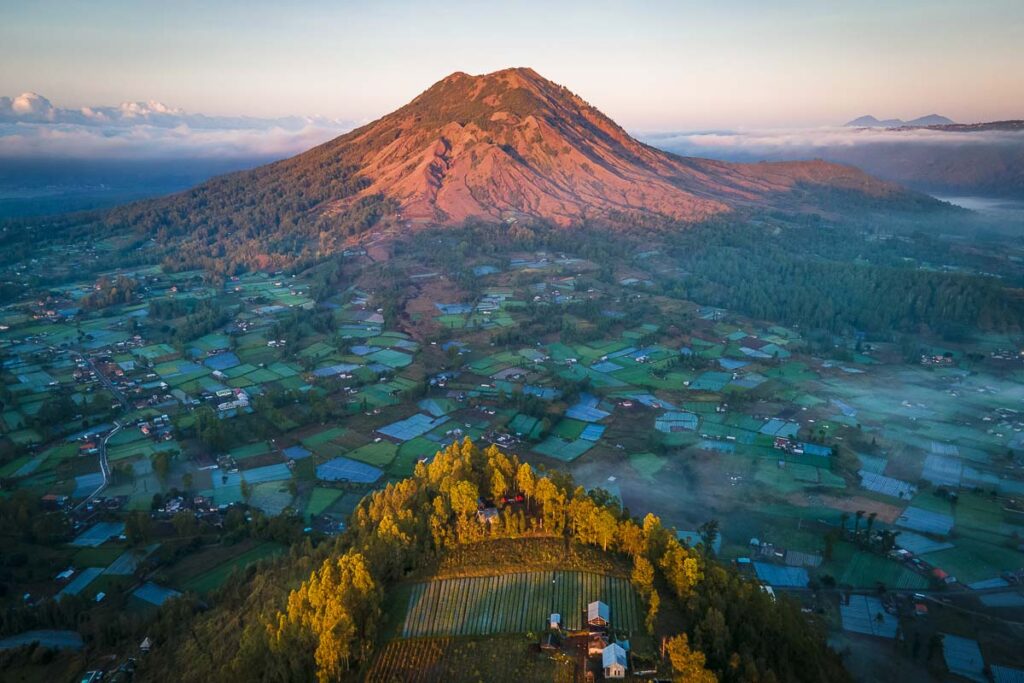
13. Mount Agung, Bali
At just over 3km high, the tallest mountain in Bali, Mount Agung, is an active volcano that last erupted five times in 2017.
Amazing views of Mount Agung can be seen from another Indonesian landmark, Lempuyang Temple and the nearby town Amed. Which do you prefer, sunrise or sunsets?
You can also hike to the top of Mount Agung with a guided trekking tour, but this is considerably harder than Mount Batur, taking 4-5 hours on a strenuous path.
- Sunset on Mount Agung
- Sunrise on Mount Agung
14. Mount Rinjani, Lombok
Surrounded by lush waterfalls and jungles, the second tallest mountain in Indonesia, Mount Rinjani, is an active volcano on the island of Lombok.
A popular activity is to hike to the summit (3726m/12,224 ft), which takes two days with an overnight stop at one of the crater lakes. The top’s panoramic views are incredible; on a clear day, you can even see Mount Agung in Bali.
Tour of Two of the Three Popular Mount Rinjani Trekking Routes
✔ Hike to the second summit of Mount Rinjani via Air Berik Route
✔ Hike to the crater rim (summit & crater lake) of Mount Rinjani
15. Kelimutu Volcano, Flores
Kelimutu Volcano is a highlight on the lesser-visited island of Flores, East Nusa Tenggara. It is actually three different colored crater lakes that sit side by side and change colors periodically, even turning a rusty red!
The Kelimutu crater lakes are sacred to the indigenous Lio people, who believe their souls will live eternally within one of the lakes.
Many people come to Kelimutu National Park to watch the sunrise, but to see the lakes at their peak turquoise brilliance, come after 9am on a sunny day.
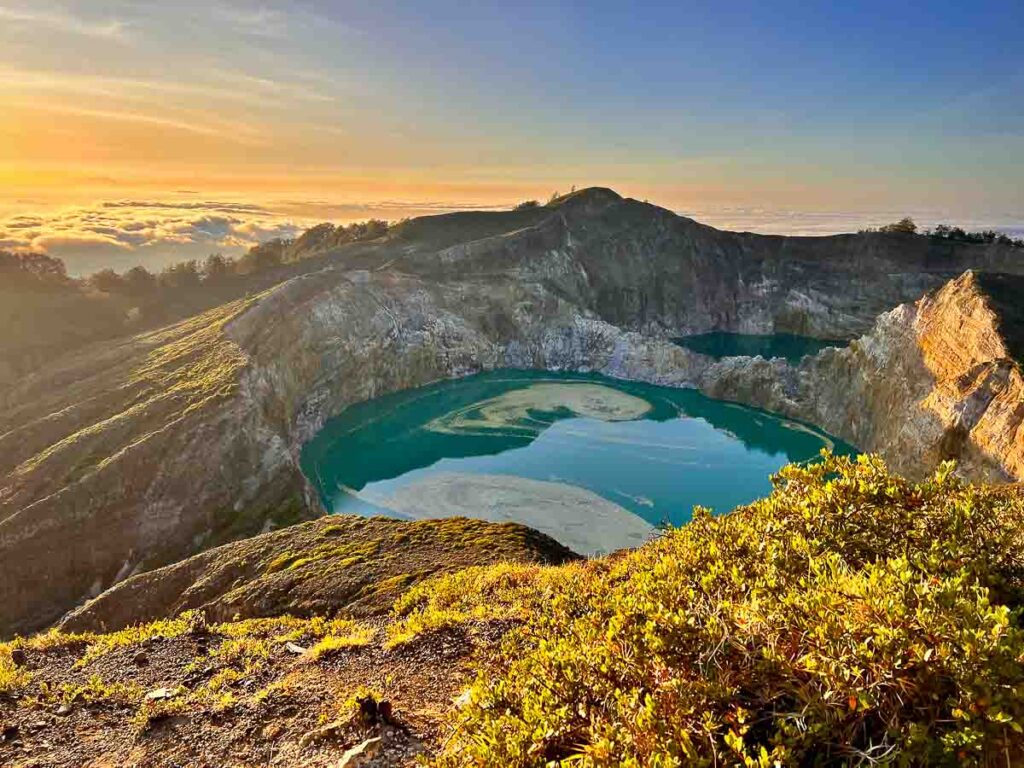
16. Lake Toba, West Sumatra
At 100km long, 50km wide, and 450m deep, Lake Toba is the largest crater lake in the world. It was formed by a volcanic eruption 74,000 years ago, which is thought to be the largest explosion in recorded history!
Sumatra is a very-little visited tourist destination for most travelers; therefore, getting to Lake Toba may take quite some effort, unless you take this guided tour that includes transportation. For independent travelers, take a ride for 6 hours from Medan, then a ferry.
Ride around all 126 km of the island on a scooter finding viewpoint after viewpoint of beauty and culture.
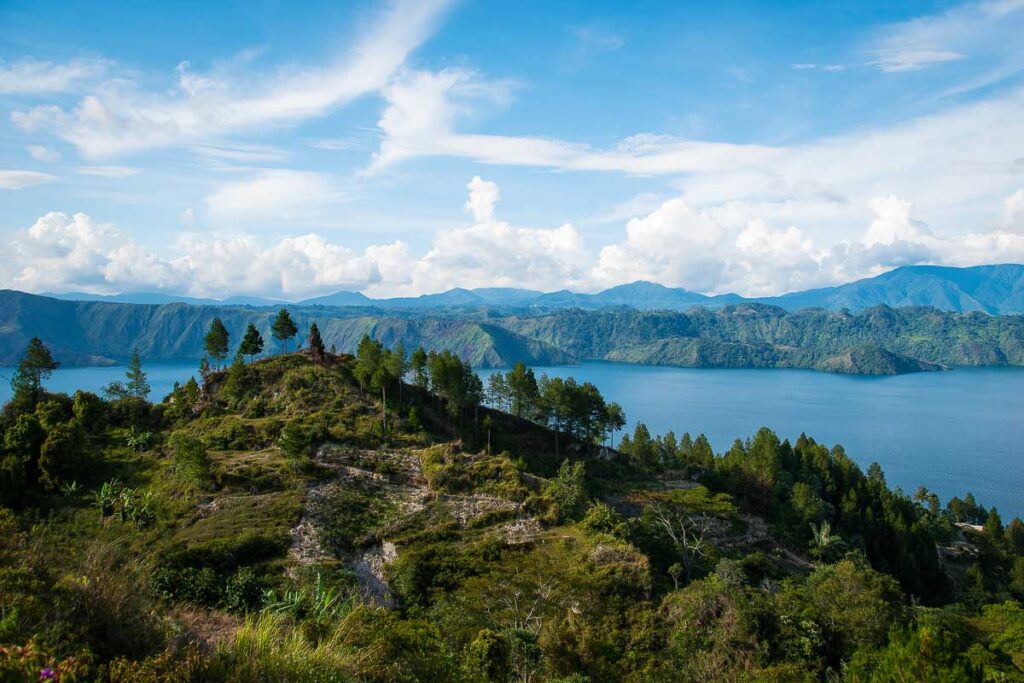
Cultural Landmarks in Indonesia
17. Monas Monument, Java
The Monas Monument is a national Indonesian monument located in the capital city of Indonesia, Jakarta. It was built to commemorate the struggle of the Indonesian people for independence. The monument is 132 meters tall and is topped with a flame that symbolizes the national ideology of Pancasila.
If you’re looking for something to do before your flight, check out this Jakarta city highlights tour.
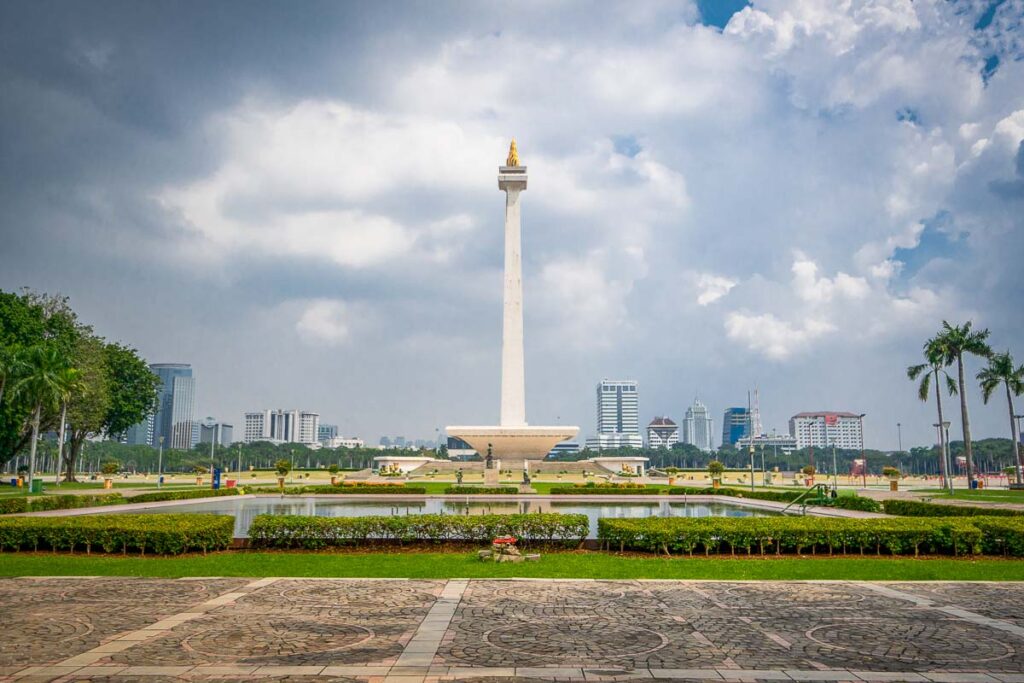
18. Kota Kua, Java
Kota Kua is a historical place modeled after Dutch architecture in the heart of Jakarta. Under Dutch rule for around 350 years, Kota Kua was once the capital of the Dutch East Indies.
Today, the city is known for its traditional architecture and handicrafts. Visitors can tour the city’s streets, learn from its museums, or watch a performance of wayang kulit (shadow puppetry).
19. Wae Rebo Village, Flores
Wae Rebo is a traditional village in Flores, East Nusa Tenggara. The village is home to the Manggarai people, who are known for their unique architecture and handwoven textiles.
Hidden quite far from civilization, hike 2-3 hours to reach Wae Rebo to explore the village, meet the locals, and learn about their culture and way of life. Most opt to stay overnight in a homestay or book a week long overland tour across Flores.
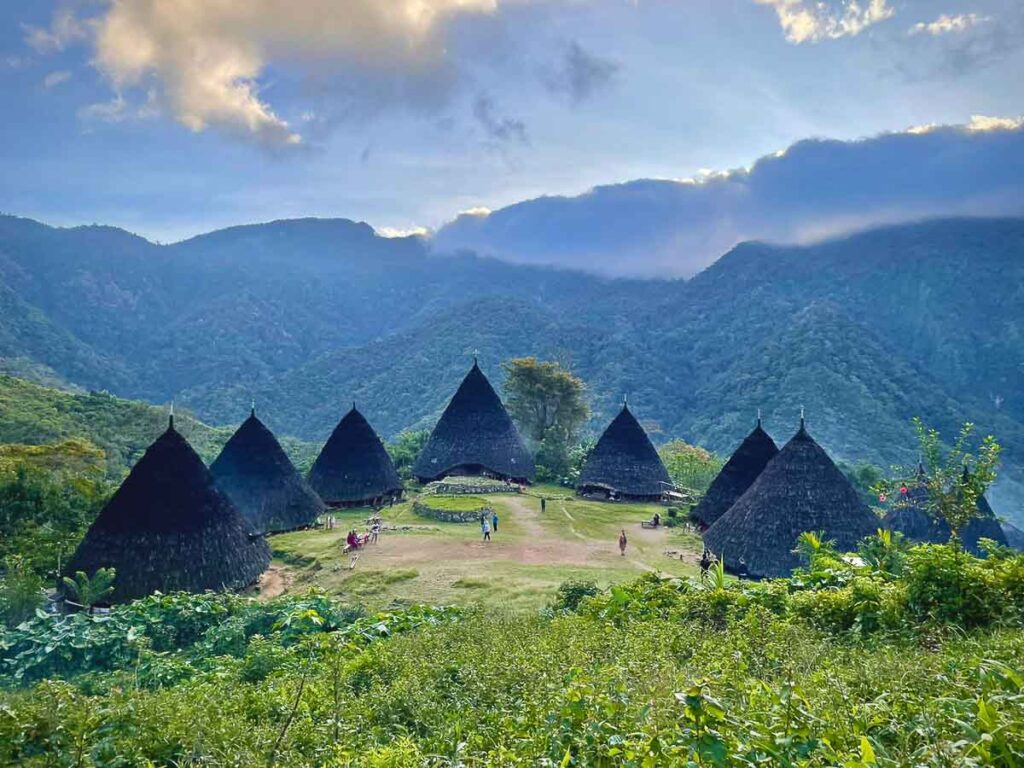
Religious Landmarks in Indonesia
20. Borobudur, Java
Borobudur (a UNESCO World Heritage Site) in Yogyakarta, is probably the most popular Indonesian landmark in the country. Built in 750AD, Borobudur, the world’s largest Buddhist temple, was created from over two million feet of volcanic stone and 504 Buddha statues.
Note: Ever since COVID-19, Borobudur has yet to allow visitors to climb up the temple and may never will. Unfortunately, the price tag of $25 to walk just around its spacious grounds remains unchanged. Guided Tours (like this one) are for an additional fee.
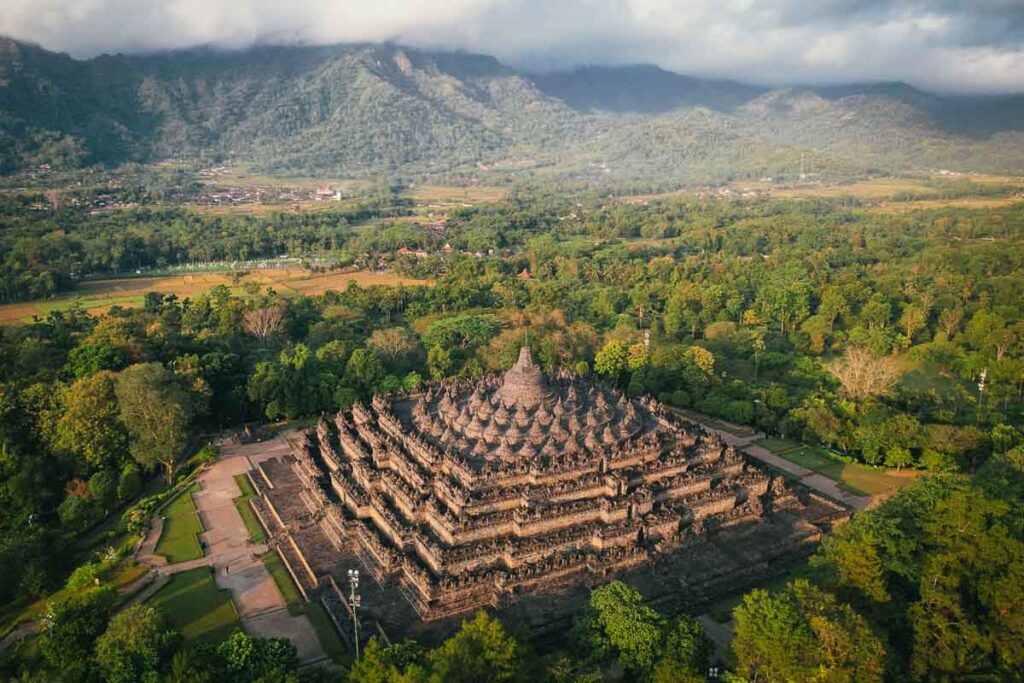
21. Prambanan Temple, Java
The legend behind Prambanan Temple (a UNESCO World Heritage Site) is one of an unrequited love story of a prince towards a more reluctant princess. Her condition for marriage: build 1000 temples in one night. Long story short: it didn’t pan out; he got mad, and turned her into the most beautiful statue in the complex.
Located just outside Yogyakarta, Prambanan Temple is another famous landmark in Indonesia built in the 9th century and is the largest Hindu temple complex in Indonesia. As a symbol of religious tolerance in Indonesia, Prambanan shares its grounds with 3 other, much smaller, Buddhist temples as well.
Note: Most visitors tend to tour Prambanan and Borobudur together as there are discounted entrance fees available for combining the two Yogyakarta attractions.
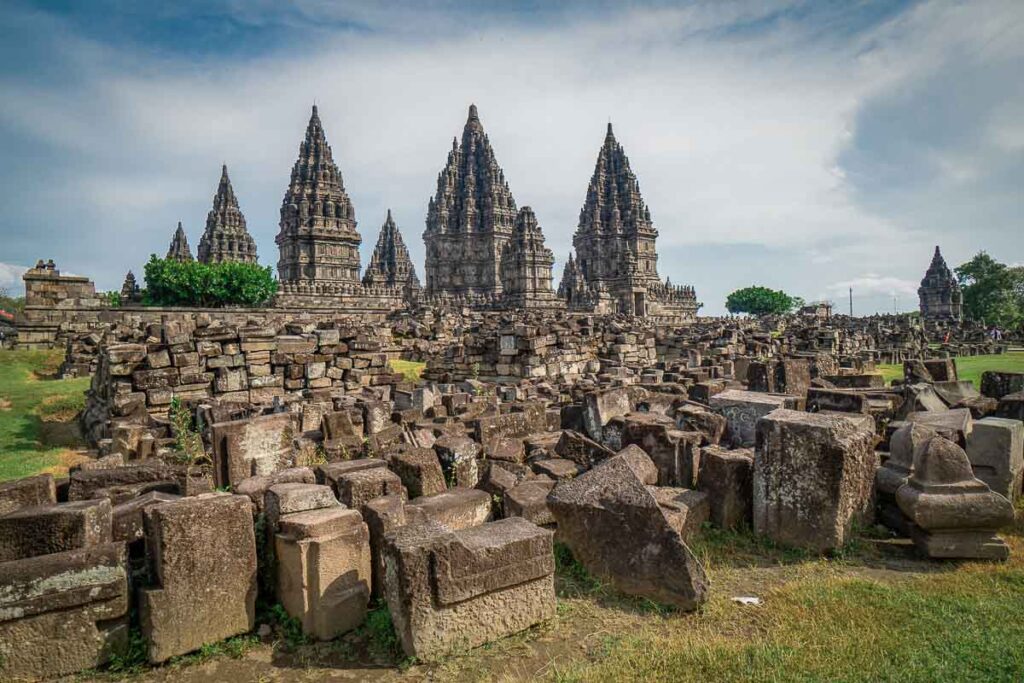
22. Istiqlal Mosque, Java
The Istiqlal Mosque in Jakarta, Indonesia, is the largest mosque in Southeast Asia and the world’s sixth-largest mosque, which can accommodate up to 120,000 people. The appearance of Istiqlal is surprisingly modern and especially beautiful when the lights turn on at dusk.
Note (In 2022): As a foreigner (non-muslim), I was only allowed to take a photo from afar, but not actually enter the grounds.
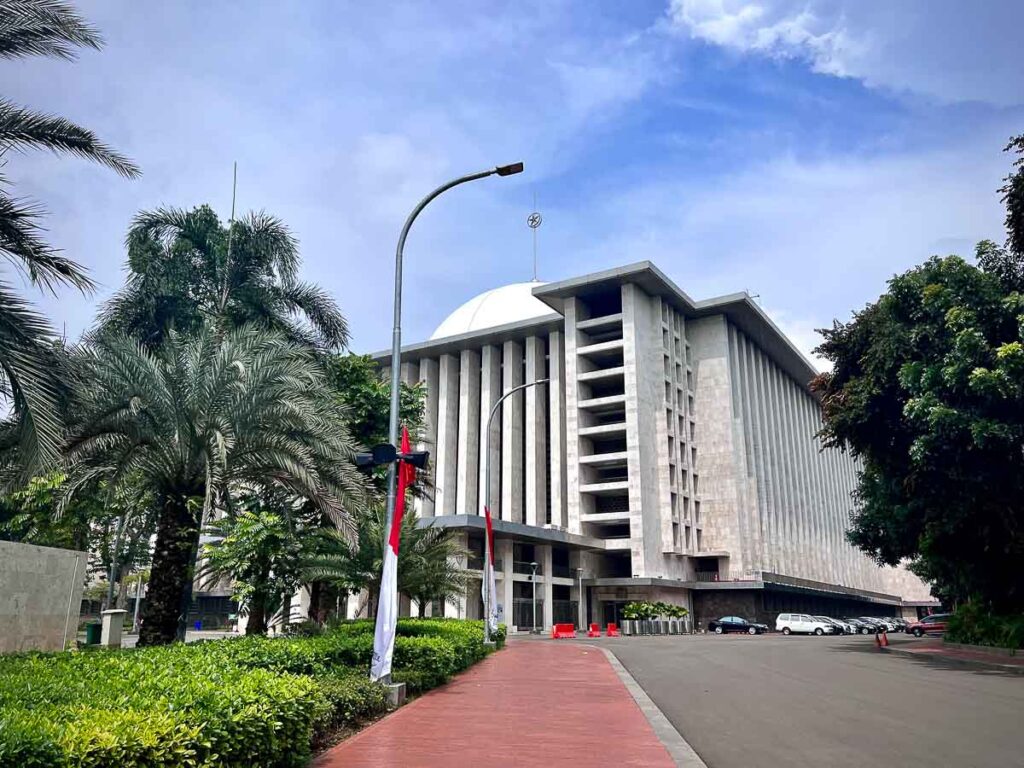
23. Uluwatu Temple, Bali
Known as the best sunset spot on Bali, Uluwatu Temple is an important Hindu temple located on dramatic seaside cliffs.
Plan to stay for the daily 2 hour Kecak Fire & Dance Show, which originates from a traditional Balinese ritual to repel evil spirits. Get there early to get a good spot as this show can get very crowded.
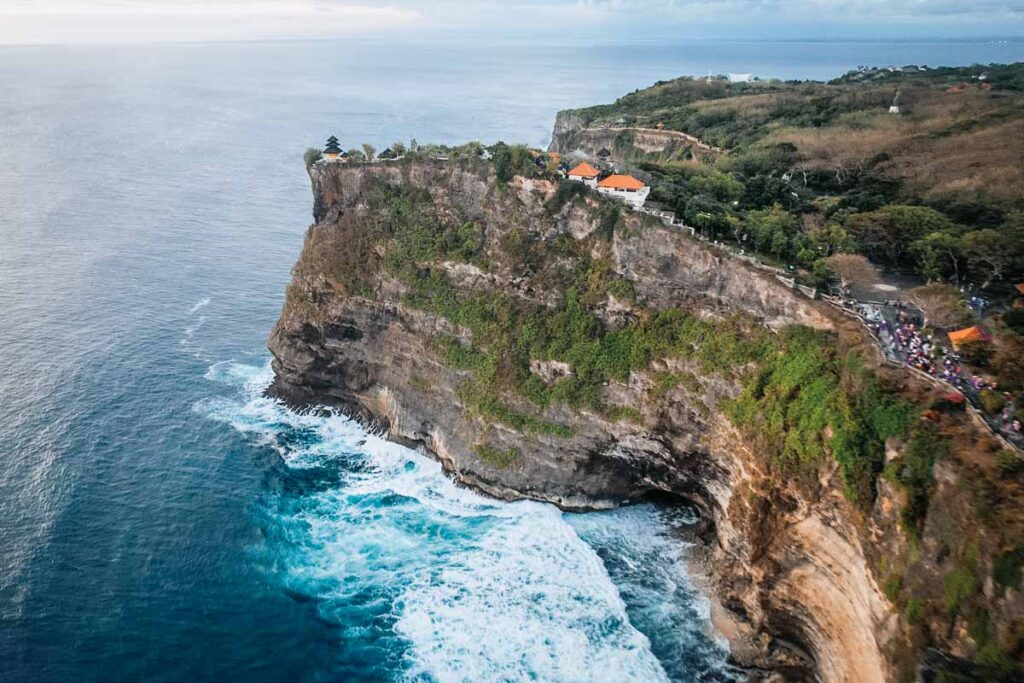
24. Tanah Lot, Bali
A sacred Hindu temple carefully placed on top of a coral rock formation makes Tanah Lot one of Bali’s most scenic places to see. Dedicated to the god of the sea, Baruna, only worshippers may enter the temple’s interior.
To get a closer view of the temple, check the tide schedule to coincide your visit with the low tide.
25. Besakih Great Temple, Bali
Known as the Mother Temple, Besakih Great Temple may be the most impressive complex in all of Bali (as well as the oldest). Set on the slopes of Mount Agung, enjoy the breathtaking view of more than 80 individual temples on seven terraced tiers.
Perhaps due to its more remote location in North Bali, Besakih has yet to be overrun by mass tourism. Join a part of a larger Bali cultural tour or otherwise, a local tour guide comes included with the entrance fee, but a tip is expected.
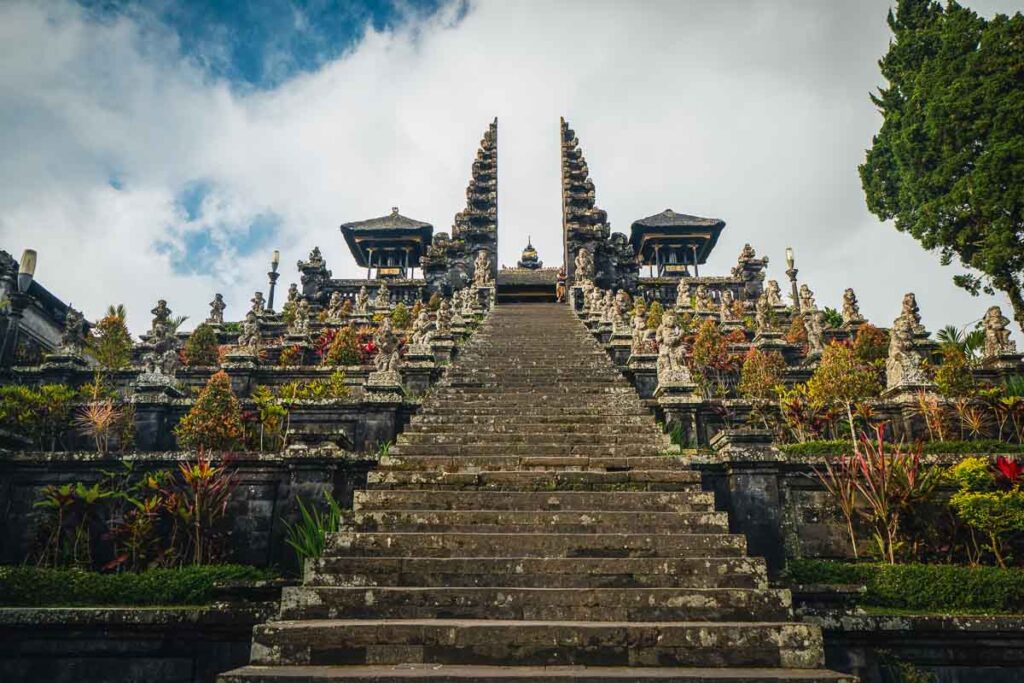
26. Pura Lempuyang Temple, Bali
Look through the Gates of Heaven for a direct view of Mount Agung. Pura Lempuyang Temple is certainly heavenly…and a perfect photo opportunity.
Lempuyang Temple is more than just the Instagram-famous gates; however, seeing the rest of the temple complex will take an approximately 4 hour steep hike along stairways.
Tip: Lempuyang has extreme wait times for the famous photo that can take up to 3 hours in the heat of the day. Come between 6-7am to avoid the photo lines and catch the sunrise. Many tours like this Bali Instagram spots tour start very early in the morning.
27. Ulun Danu Temple, Bali
A serene and beautiful temple on the shores of Lake Beratan, Ulun Danu Temple is one of Bali’s most iconic landmarks. Boat ride around the lake to see the temple from all sides. Unfortunately, the true colors only emerge on sunnier days.
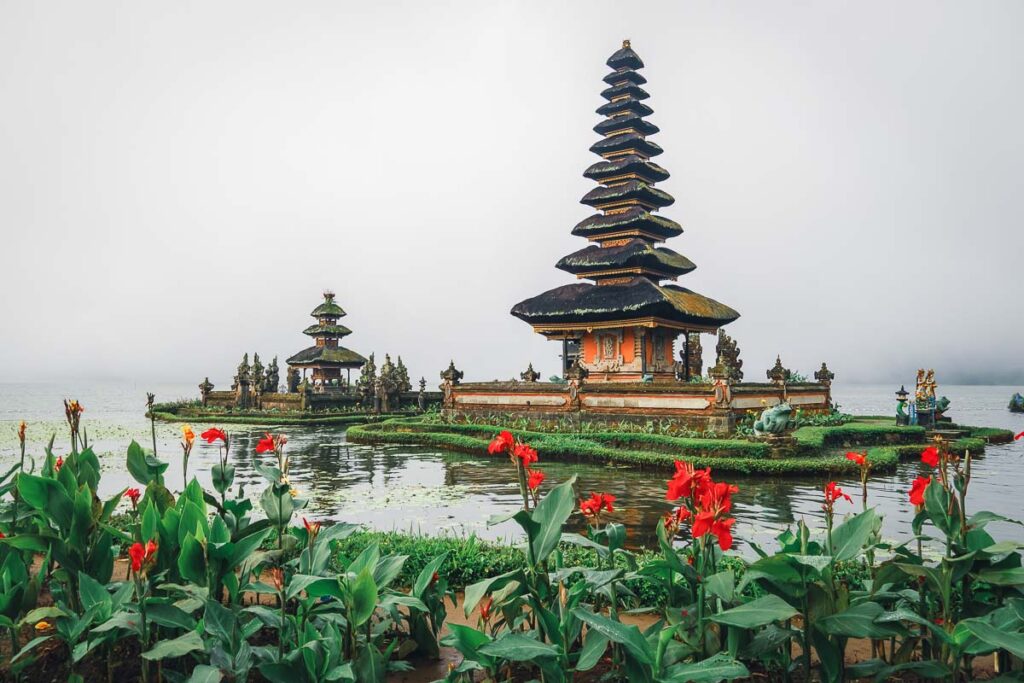
Wrap-Up: Famous Landmarks in Indonesia
Whether you’re looking to explore Indonesia’s natural beauty, its culture, or its religious landmarks, Indonesia has a wealth of attractions to offer visitors. From the crater lakes of Kelimutu to the temples of Borobudur and Prambanan, the list above of landmarks in Indonesia represents only a handful of exciting places to see while traveling the Indonesian archipelago. There are many, many more!
Where Next in Bali?
I spent almost two months going around all of Bali. Check out these other posts to see if any of these destinations pique your interest.
- How To See Tegalalang Rice Terrace, Bali
- Pura Besakih Temple, Indonesia: Bali’s Best Temple
- Lempuyang Temple, Bali
- Northern Bali Itinerary: 21 Best Things To Do In North Bali, Indonesia
- East Bali Itinerary: 25 Best Things To Do In Eastern Bali, Indonesia
- 17 No FOMO Things To Do In Nusa Lembongan & Ceningan, Bali
Have Travel Questions About Bali? Maybe I’ve Answered Them
| TRAVEL RESOURCES |
| ✈️ Find the best tours and activities with Viator to cross off your bucket list and create unforgettable memories 🏘️ Book your accommodation with Booking.com in advance and check availability on the days of your travels. 🧾 Rent a car in advance with Discovercars for those epic road trips at the best price. |
Catherine Xu is the founder and author of Nomadicated, an adventure travel blog that helps travelers cross off their bucket list. Since discovering traveling in 2015, she has lived and journeyed to 65 countries across 5 continents and vanlifed the west coast USA for 2+ years. These days, she splits her time in Southeast Asia and California while sharing her travel stories and resources based on first-hand experiences. Catherine's other works has been referenced in major publications like MSN, Self, and TripSavvy.

